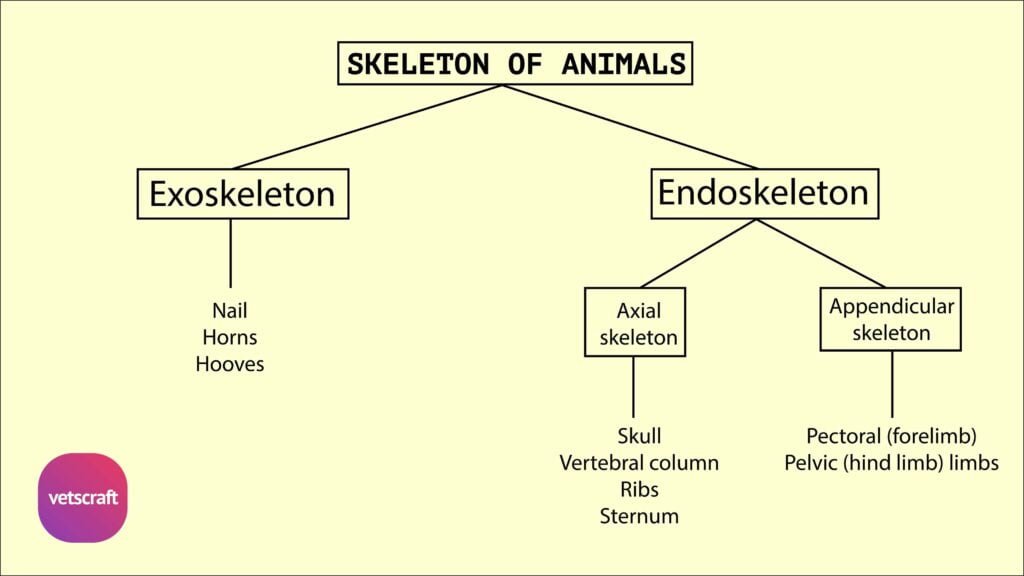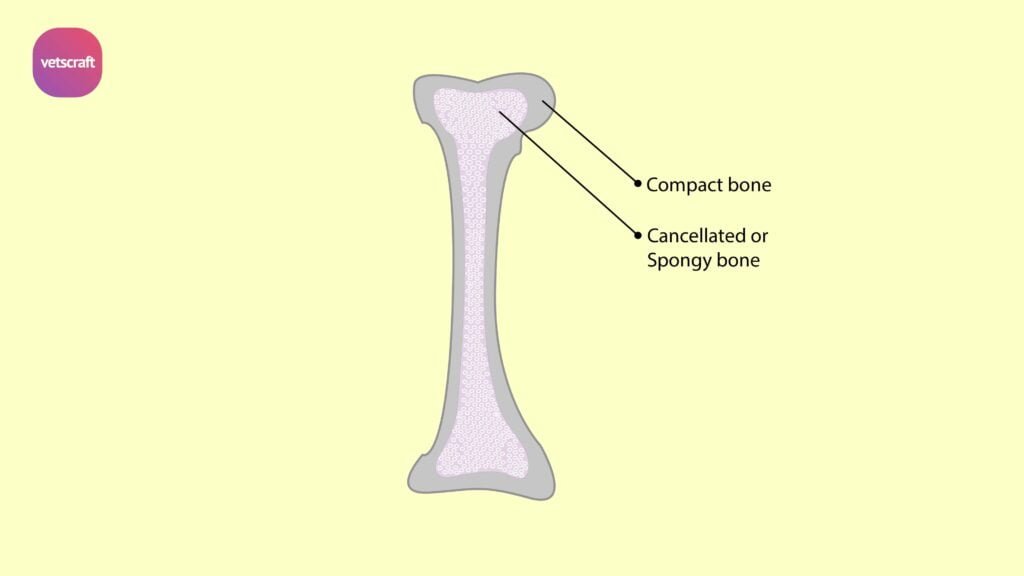TABLE OF CONTENTS
Ribs of Domestic Animals
Ribs of domestic animals are elongated, curved bones that form the lateral walls of the thoracic (chest) cavity. They occur in pairs and correspond to the number of thoracic vertebrae.
Each rib articulates dorsally with the vertebrae and extends ventrally, either connecting directly to the sternum (sternal ribs), indirectly through cartilage (asternal ribs), or remaining free (floating ribs).
Ribs of Ox
The ribs are elongated, curved bones that form the skeleton of the lateral thoracic walls. They are arranged serially in pairs, corresponding in number to the thoracic vertebrae. Thus, there are thirteen pairs of ribs.

Each rib articulates dorsally with two vertebrae and is continued ventrally by a costal cartilage. Those that articulate with the sternum by means of their cartilage (eight pairs) are termed sternal ribs; the remainder are asternal ribs.
Ribs at the end of the series with free ventral ends not attached to adjacent cartilage are called floating ribs. The intervals between ribs are called intercostal spaces.
A typical rib is an elongated, flat, curved plate. It presents a shaft and two extremities.
Shaft
The shaft is most curved at its upper part, while its lower part is twisted and inclines inwards.
The lateral surface is convex and is marked by a wide groove in its anterior part. The point at which a rib is most curved is termed the angle, and here it presents a rough area for the attachment of the longissimus dorsi muscle.
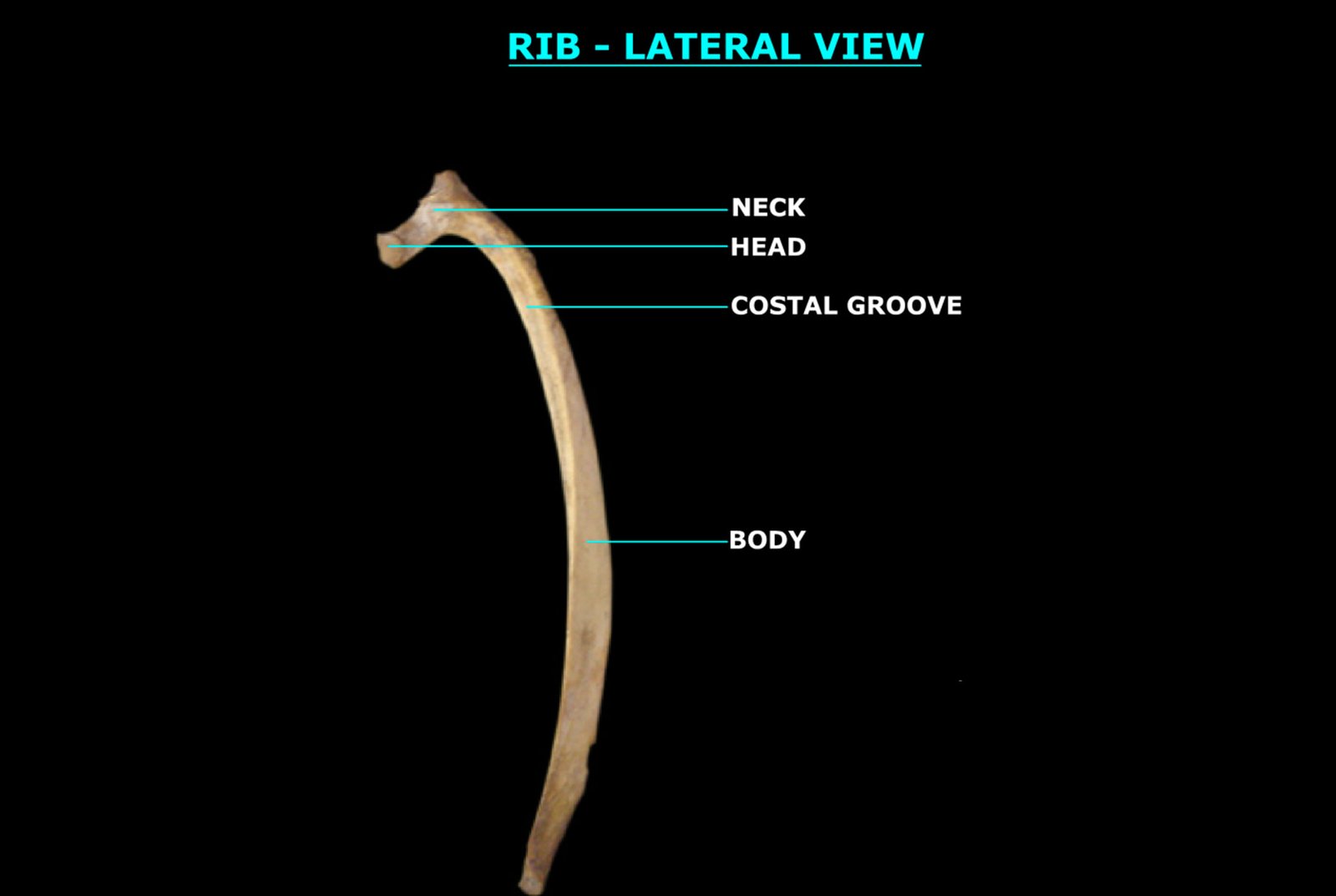
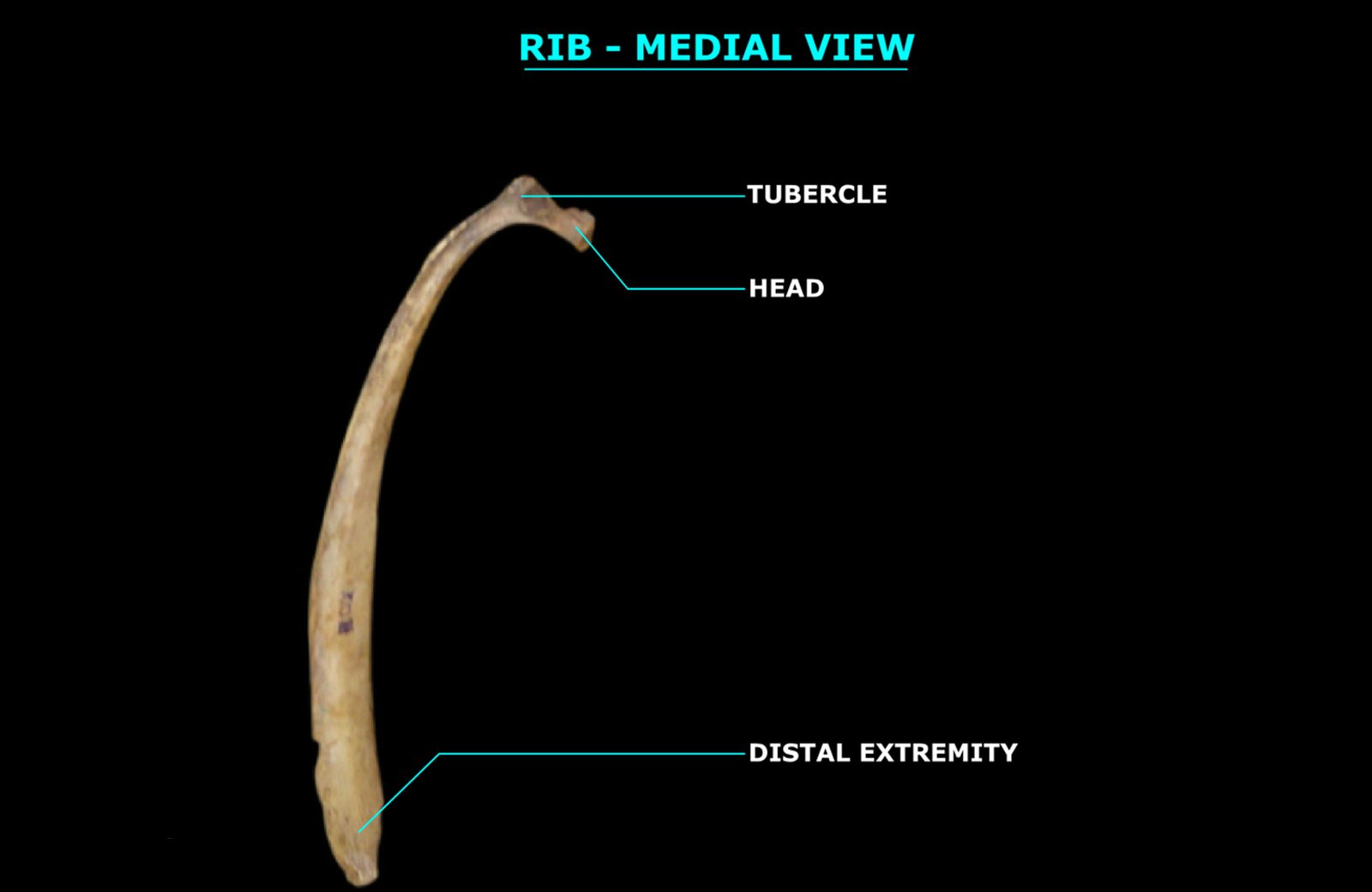
The medial surface is smooth, concave, and presents at its posterior part a distinct groove—the costal groove—which turns downwards and disappears about the middle of the bone and lodges the intercostal vein. The borders serve for the attachment of the intercostal muscles.
Upper Extremity
The upper vertebral extremity is made up of a head, neck, and tubercle. The head presents an articular area composed of two convex facets—anterior and posterior—separated by a non-articular groove.
The facets articulate with the capitular facets of two adjacent dorsal vertebrae and the intervertebral fibrocartilage between them, while the groove serves for the attachment of the round conjugal ligament.
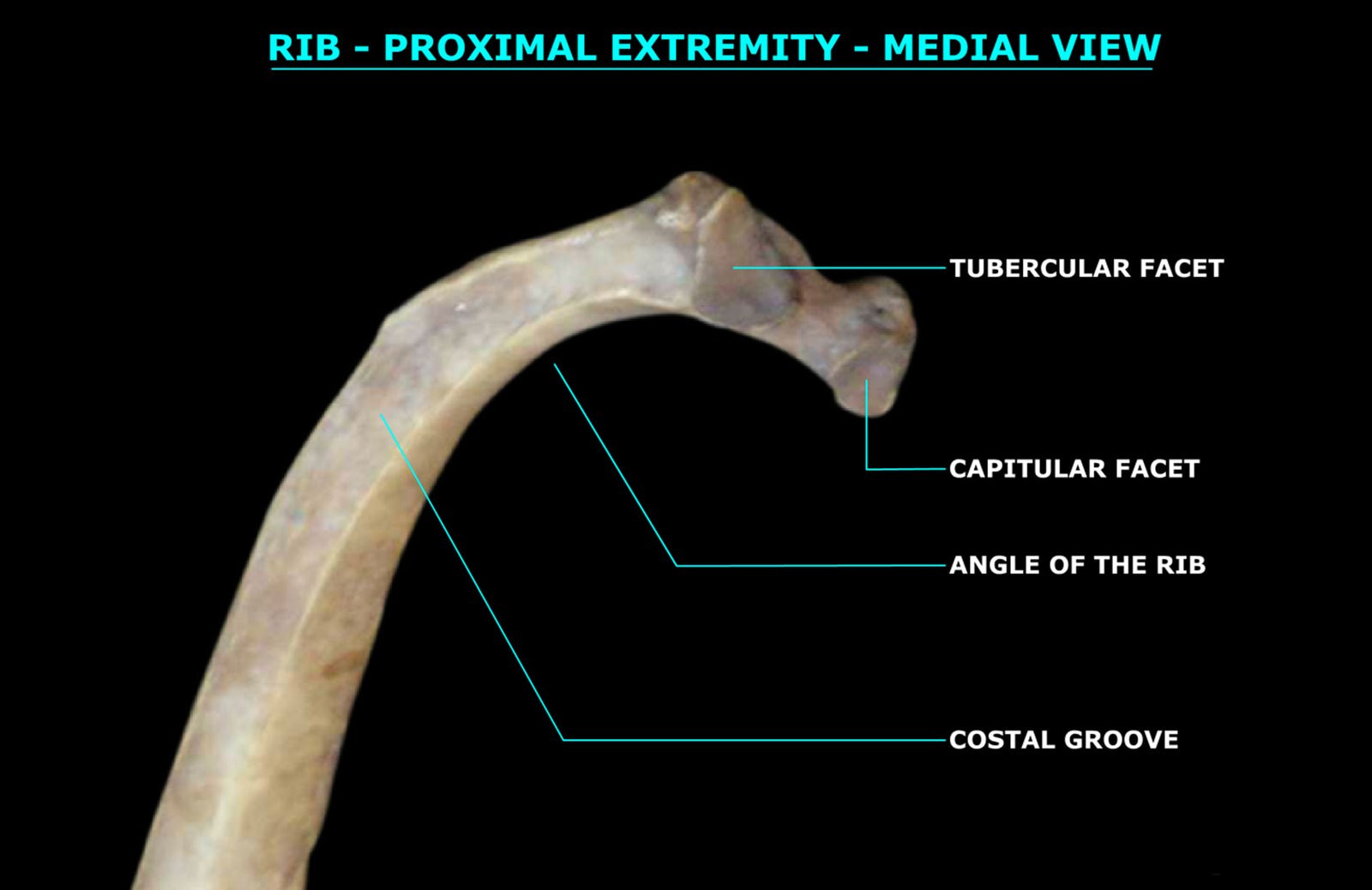
The neck joins the head to the shaft and is roughened above and in front for ligamentous attachment.
The tubercle is situated above and behind the head at the junction of the head and neck. Dorsally, it presents a transversely placed concave facet for articulation with the tubercular facet of the posterior vertebra of the two with which the head articulates.
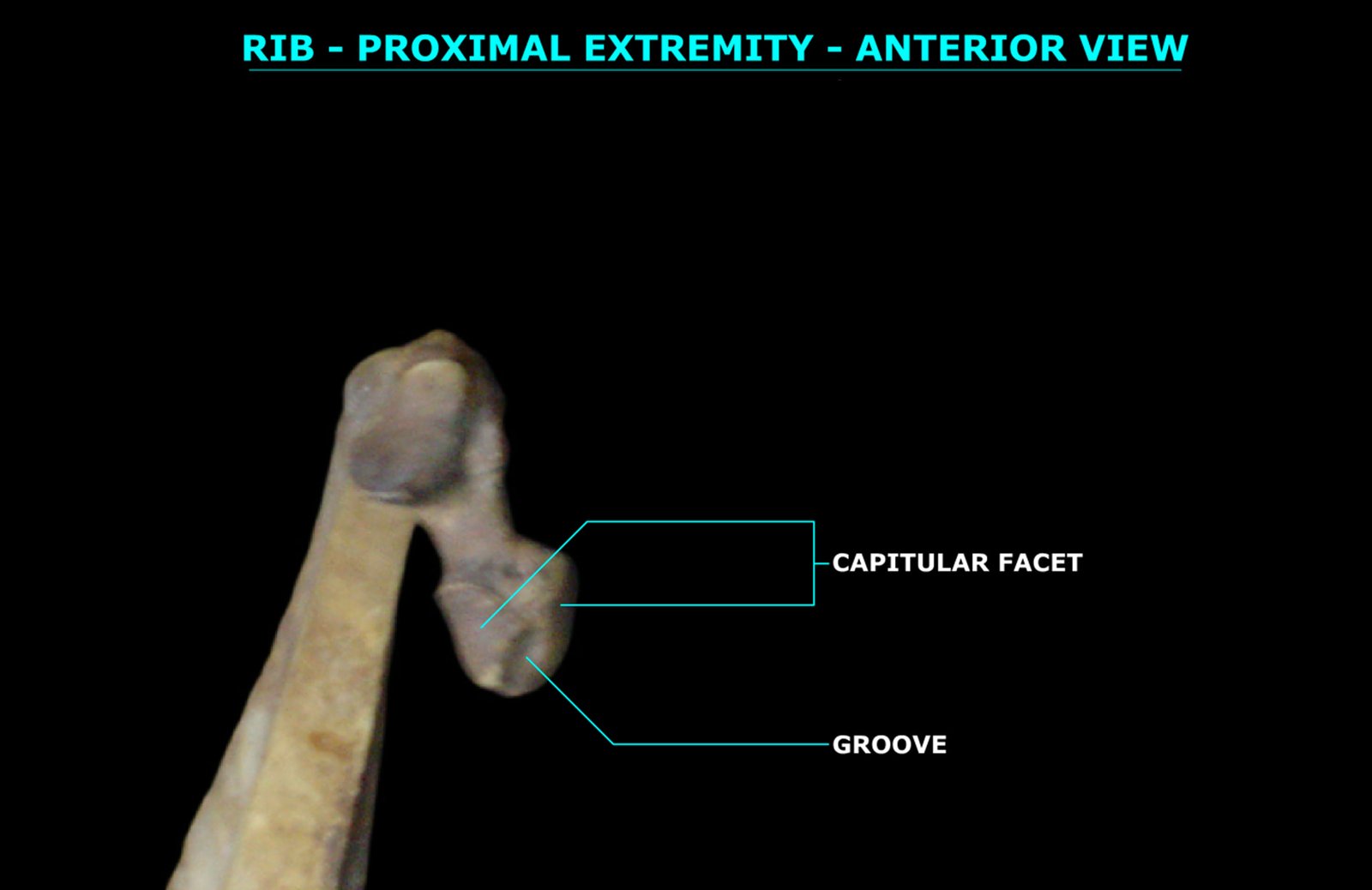
The tubercular facet is small, flat, or absent in the last two or three ribs.
Lower Extremity
The lower sternal extremity is smooth and articulates with its costal cartilage. The ventral ends of the second to the tenth or eleventh ribs, inclusive, form diarthrodial (movable) joints with their cartilages.
Special Anatomical Features of Ribs in Ox
The first rib is the shortest and least curved. The sternal end widens greatly. The lateral surface and the anterior border present a rough area about their middle for the scalenus ventralis. At the lower part of the anterior border is a smooth impression left by the dorsal roots of the brachial plexus. The groove on the lateral surface and the costal groove are absent.
The head is divided by an oblique ridge into two facets. The tubercle is larger than that of any other rib.
The eighth, ninth, and tenth ribs are the longest and widest. Both in front and behind these, the length and breadth diminish gradually. The first costal cartilage is the shortest.
The costal cartilages are rods of hyaline cartilage and form diarthrodial joints with the ribs (from the 2nd to the tenth or eleventh). Those of the sternal ribs articulate with the sternum by sternal cartilages. Those of the asternal ribs overlap and are attached to each other by elastic tissue to form the costal arch. Except in the case of the first, the cartilage does not continue the rib but forms, with the latter, an angle that is open in front and increases from the second to the last.
Comparative Anatomy of Ribs
Comparative anatomy of ribs in domestic animals highlights the differences in the number, shape, articulation, and function of ribs among various species.
Sheep and Goat
- There are 13 pairs of ribs, but the occurrence of a 14th pair is common in sheep and goats.
- The 13th rib is often floating, and the 14th rib, when present, is also floating.
- The ribs are narrower and strongly curved in the anterior part of the series.
- The second to the eleventh ribs form diarthrodial joints with their cartilages.
- The 13th rib may be more or less rudimentary on one or both sides and may be fused with the corresponding vertebra, making the latter ambiguous in character.
Horse
- There are 18 pairs of ribs in the horse—8 sternal and 10 asternal. They are shorter, narrower, thicker, more regular, and more curved.
- The neck is shorter.
- The length increases up to the 10th rib and then diminishes.
- The anterior borders of the ribs from the 2nd to the 8th are sharp, and from the 9th to the 18th, they are rounded and thick.
- The lower ends of the ribs are slightly enlarged and roughened at the junction with the costal cartilage.
- In regard to the dorso-ventral direction, the first rib inclines slightly forward, the second is about vertical, and the others slope backward to an increasing degree.
- The first two costal cartilages articulate with each other and with the sternum.
- The upper ends of the cartilages form synarthrodial (immovable) joints with the ribs.
Pig
- There are 14 or 15 pairs of ribs in pigs, of which 7 are sternal and 7 or 8 are asternal.
- They are strongly curved with a distinct angle.
- The backward slope of the posterior ribs is slight.
- The first rib is prismatic, has a large sternal end, and a very short cartilage.
- The tubercle fuses with the head on the last five or six ribs.
- The second to fifth ribs form diarthrodial joints with their cartilages, which are wide and plate-like.
- The 15th rib, when present, may be fully developed and its cartilage may enter into the formation of the costal arch. However, in most cases, it is floating, and in some cases, it is only about an inch in length.
Dog
- There are 13 pairs of ribs in dogs—9 sternal and 4 asternal.
- They are strongly curved, narrow, and thick.
- The last rib is usually floating.
- The heads of the last two or three ribs articulate with only one vertebra.
- The costal cartilages are long and curve ventrally and forward. The length and curvature of the first pair are striking special features.
Rabbit
- There are 12 pairs of ribs in rabbits, of which 7 are sternal and 5 are asternal.
- The last pair is floating.
Fowl
- There are 7 pairs of ribs in fowl.
- Each rib is made up of an upper vertebral rib and a lower sternal rib.
- The first, second, and sometimes the seventh do not have sternal ribs; these are floating.
- The head of each rib articulates with the capitular cavity of a single dorsal vertebra.
- Except for the first and seventh, the posterior border of each vertebral rib presents an uncinate process directed backward to overlap the succeeding rib.
- Sternal ribs are homologous to the mammalian costal cartilage.
